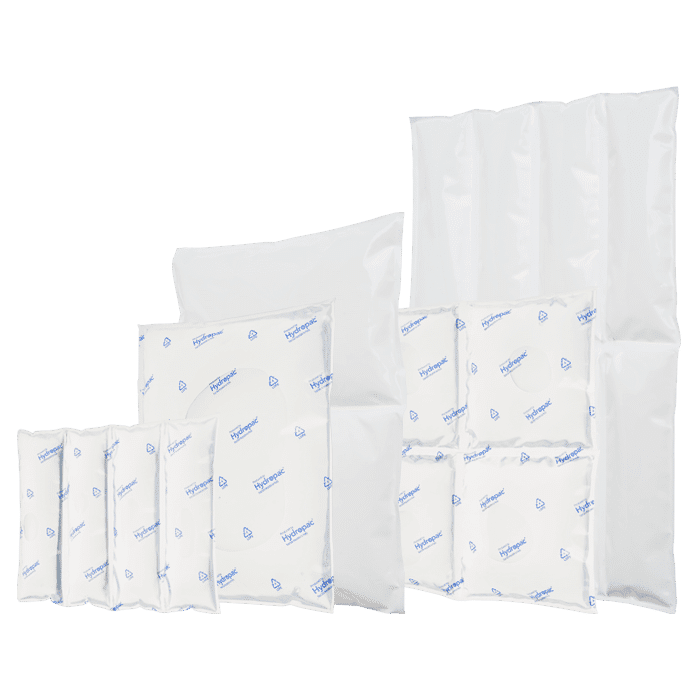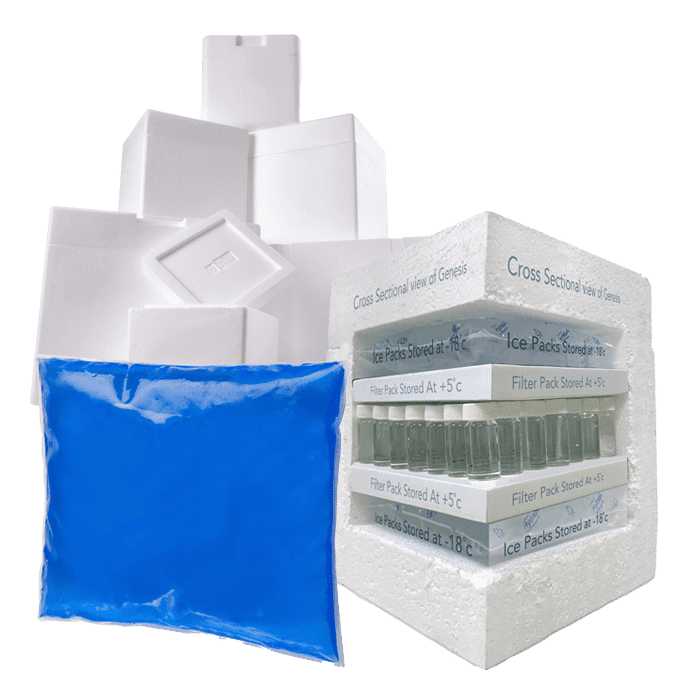Shipping guide to keeping food fresh during transit
When shipping fresh food, you face a few challenges, such as humidity, extreme temperatures and in the worst-case scenario, spoilage. The key factors to shipping perishables and keeping them from spoiling are refrigeration and insulation. These keep the temperatures cool inside and the heat and humidity outside.
Follow these simple steps to help you ship your fresh food without any problems:
Custom chilled solutions for you
Hydropac offers every customer a customized solution for chilled and conditioned shipping. For example, we help a customer with limited freezing capacity to deliver gel packs frozen and ready to use, and we can manufacture almost all shapes and sizes of cooling elements. As a customer, you come first: we are here to help you.
Packaging
Packaging is the first aspect you should consider when protecting your perishable foods from getting damaged or going off during transit.
- Boxes – The boxes you use to ship your fresh food are important, especially when you are concerned about the temperature that the goods need to be kept at.
- There are different packaging systems available that have different properties. You can select shipping systems such as Freshpac Chilled & Frozen ReflectiveAir for food shipments that have the requirement to stay chilled or frozen, or opt for a different system such as EnviroCool which is an eco friendly compostable system with excellent thermal properties.
- Airtight – Be sure to wrap baked goods such as pies, cakes and pastries to create an airtight seal. Wrapping with plastic or other airtight containers will allow the food to maintain the freshness without going off or becoming dry.
- Padding – Some shipping systems already come with added padding to the inside of the box, but to make sure your goods do not move around whilst in transit, it is a good idea to pack out the gaps. Packing and padding out the gaps inside the box with crumpled paper, bubble wrap or another alternative will prevent the goods from getting damaged.
Cold Storage
Ensuring the longevity of fresh food deliveries which are temperature sensitive can be risky, so it is important to make sure that they maintain the perfect temperature throughout the journey. A couple of degrees can be all it takes to spoil fresh foods, so insulation and refrigeration are key.
- Insulation – Insulation is important when shipping fresh food so try to use sturdy, insulated containers for meats, fish and dairy. The insulation could be from a polystyrene box or a heavy grade LDPE and foil combination. There are many options you could use to insulate your fresh food, so it is down to what is best for you and the type of perishables you are shipping.
- Watertight – Make sure that any fresh foods that need to stay chilled are placed in a watertight plastic. Line the inside of the shipping system with a plastic liner to protect the box in case the items start to melt or if the contents contain liquid. This will prevent the box from leaking and going soggy. If the box is soggy, it will not perform properly and may result in the items getting damaged in transit.
- Ice/Gel Packs – Consider using ice packs or gel ice packs inside your container to maintain the temperature of the fresh food items during transit. This will keep the cold on the inside of the shipment, leaving the food still fresh when it arrives at the destination.
Sustainability Hydropac and CSR
Sustainability isn’t just a trend for us – it’s a promise. As we innovate, create, and lead, we keep our planet’s well-being at the forefront. With Hydropac, you’re not just preserving the quality of your cargo; you’re contributing to a healthier world.
Experience the power of sustainable temperature assurance with Hydropac – where excellence and environmental responsibility coexist for a brighter future.





